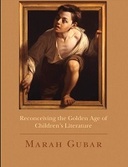Explore

This book proposes a fundamental reconception of the 19th-century attitude toward the child. The Romantic ideology of innocence spread more slowly than we think, it contends, and the people whom we assume were most committed to it—children’s authors and members of the infamous “cult of the child”—were actually deeply ambivalent. Writers such as Lewis Carroll, Frances Hodgson Burnett, and J. M. Barrie often resisted the growing cultural pressure to erect a strict barrier between child and adult, innocence and experience. Instead of urging young people to mold themselves to match a static ideal of artless simplicity, they frequently conceived of children as precociously literate, highly socialized beings who—though indisputably shaped by the strictures of civilized life—could nevertheless cope with such influences in creative ways. By entertaining the idea that contact with the adult world does not necessarily victimize children, these authors reacted against Dickensian plots which imply that youngsters who work and play alongside adults (including the so-called Artful Dodger) are not in fact inventive or ingenious enough to avoid a sad fate. To find the truly artful child characters from this era, the book maintains, we must turn to children’s literature, a genre that celebrates the canny resourcefulness of young protagonists without claiming that they enjoy unlimited power and autonomy.
This book is included in DOAB.
Why read this book? Have your say.
You must be logged in to comment.
